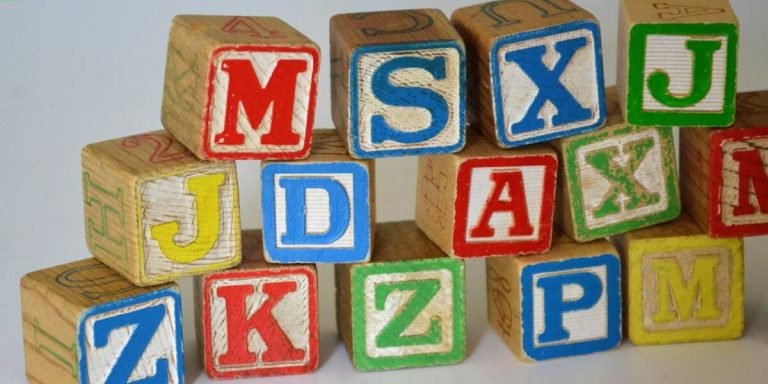Sensory Processing Disorder Test: A Closer Look for Parents and Educators
Understanding children and their unique needs is a primary facet of parenting or educating. It’s common for us to wonder why some children behave differently than others, typically dismissed as tantrums or growing pains. However, it can be more intricate – such as Sensory Processing Disorder (SPD).
For parents and educators grappling with figuring out if their child/student has SPD, taking a sensory processing disorder test could be the first step towards understanding this condition better.
Deciphering whether these behavioral patterns are mere idiosyncrasies or indicators of an underlying issue like SPD requires access to reliable special education resources and support. With early detection through tools like the sensory processing disorder test being key in managing SPD effectively, we delve into what this entails for those unfamiliar with its concept but find themselves needing clear guidance about it.
Did you know?
Despite being commonly mistaken as a behavioral issue, Sensory Processing Disorder (SPD) is actually a neurological condition that impacts how the brain processes and responds to sensory stimuli. Around 5-16% of children show symptoms associated with SPD, underscoring its relevance in childhood education discussions.
Understanding Sensory Processing Disorder (SPD)
begins with grasping the fundamental role of sensory processing in a child’s learning and development. This intricate process involves the nervous system receiving messages from senses, interpreting them, and orchestrating appropriate motor or behavioral responses. However, when this coordination is disrupted due to SPD, it affects how children receive information from their environment making it challenging for them to interact smoothly at home or school.
In recent years technology has played an increased part in helping educators diagnose situations where a child might be struggling with SPD. The advent of advanced software applications like ‘sensory processing disorder tests’ allows professionals to efficiently monitor symptoms that may indicate SPD conditions among students. These digital tools provide diverse resources customized according to individual needs fostering better interaction between teachers and special-needs students by ensuring no kid feels left out during class activities.
As we move forward into 2023 it’s essential that parents and educators are provided with mechanisms such as these technological devices aimed specifically at resolving issues related to disorders similar to SPD- because education should never discriminate against any student irrespective of whatever challenges they face learning wise every day.
Defining SPD: Recognizing the Signs and Symptoms
Sensory Processing Disorder (SPD), also known as Sensory Integration Dysfunction, is a neurological condition that affects how the brain processes sensory information. Children with SPD may be hypersensitive to stimuli, experience difficulty coordinating their movements or struggle with processing information from their senses.
Keep an eye out for these early signs and symptoms of SPD to manage the disorder effectively:
1. Unusual response to noises: If your child seems unduly disturbed by loud sounds such as vacuum cleaners or blenders running – more so than other children his age – it could be one indication of SPD.
2. Difficulty handling texture: Certain textures whether those found in food items like mashed potatoes or materials like cotton might seem unbearable for them.
3. Trouble maintaining balance: They have trouble keeping equilibrium while doing normal activities; are clumsy and often bump into objects around them.
4. Seems detached from physical world: At times they would act oblivious towards touch or won’t respond when called upon indicating problem dealing with sense signals.
For parents suspecting these traits, seeking professional guidance becomes crucial where pediatricians usually suggest taking up a sensory processing disorder test which helps identify if there’s real cause of concern here.
The Role of Professional Evaluation in SPD Diagnosis
Identifying Sensory Processing Disorder (SPD) in children can often be a challenge owing to its complex nature and broad spectrum of symptoms. The role played by professional evaluation hence becomes extremely crucial in validating an SPD diagnosis, which provides the basis for deciding necessary interventions.
One primary step involves taking a sensory processing disorder test under the guidance of experienced practitioners. This test is designed to identify areas where children might struggle, such as tactile sensitivity or balance issues. A comprehensive examination looks at how youngsters respond to different stimuli – touch, sound, motion- making it easier to develop personalized strategies that assist them better navigate their world.
The importance of these evaluations cannot be overstressed because early detection significantly improves outcomes for kids with SPD. Once you have clarity on your child’s challenges via this diagnostic process, there are numerous special education resources available today including technology-based solutions specifically tailored towards assisting children with sensory disorders.
Technology Integration in Education has crafted innovative ways into learning environments catering specially for those dealing with SPD through interactive games and apps geared toward enhancing various skills like fine motor abilities or emotional regulation tactics among others – all while keeping engagement levels high!
In addition to tech-savvy educational tools that make learning more inclusive and engaging for our little ones grappling with sensory struggles; supportive communities abound! Forums filled parents sharing experiences or professionals offering expert advice provide invaluable support along every step of your journey navigating childhood illness thus creating solid foundation upon which progress can thrive.
Navigating Special Education Resources for SPD Support
“Sensory Processing Disorder (SPD) is a complex neurological condition that affects the way sensations are experienced and processed. In 2023, recognizing SPD’s impact on childhood education has never been more important. A sensory processing disorder test can be instrumental in identifying children who need special educational support within this spectrum.
Technology integration is reshaping education systems globally and it offers incredible resources for supporting students diagnosed with SPD. Educational online platforms now provide personalized learning experiences tailored to cater to each child’s specific needs which include those with Sensory Processing Disorders as well.
Finding the Right Therapeutic Interventions
If your child has been diagnosed with sensory processing disorder (SPD), finding the right therapeutic interventions can feel overwhelming. But thankfully, there are a myriad of special education resources available to support children and parents in this journey.
One key step is getting an accurate sensory processing disorder test for your child. This evaluation helps identify specific challenges faced by your child related to SPD that allows professionals to tailor make therapy plans according to individual needs.
When it comes down to choosing appropriate therapies, many factors need considering; including availability, cost effectiveness and suitability for the particular symptoms exhibited by the kid suffering from SPD. Therapeutic options may range from occupational therapy focusing on improving gross motor skills or cognitive behaviour therapy emphasizing on anxiety alleviation among others.
While traditional methods have their benefits, technology integration in education offers innovative solutions too. Modern tools such as mobile applications packed with interactive games designed specifically keeping kids with SPD can help them engage better while stimulating senses appropriately simultaneously providing entertainment!
In 2023 digital platforms developed especially for educators supporting these unique learners provide plethora information at fingertips! Resources available online include training webinars detailing latest research findings around SPD along practical application ideas incorporated into teaching strategies leading towards more inclusive learning environments benefiting all students irrespective ability level they possess.
Accessing Assistive Technologies and Accommodations
As parents and educators, being aware of the assistive technologies available can make a world of difference when supporting children with Sensory Processing Disorder (SPD). The web is awash with numerous resources dedicated to offering help in this area. Let’s learn about some crucial elements that would ease your journey.
Now that you have clarity, one way technology aids special education efforts involves creating personalized learning environments through specialized software applications or devices known as Assistive Technologies (ATs).
Assistive technologies offer solutions tailored specifically towards individual student needs by improving their functionality across various aspects such as communication skills development, engagement in play activities or adaptability within physical spaces.
Accommodations refer to changes made to how an activity typically takes place so those who need additional supports due not just succeed but excel at them. This could mean using text-to-speech features during reading sessions or allowing extra time during tasks requiring fine motor control amongst others.
In addition, there are several online platforms also designed explicitly catering towards helping people like yourselves working tirelessly behind these young champions! These include guides detailing comprehensive strategies around how best leverage AT tools while ensuring effective accommodations implementation thereby easing everyday life struggles faced whilst living SPD conditions.
Preparing for a Sensory Processing Disorder Test
When it comes to preparing for a sensory processing disorder test, understanding the condition and its impact on your child’s learning journey is of utmost importance. Sensory Processing Disorder (SPD) relates to how the nervous system receives messages from the senses and converts them into appropriate motor and behavioral responses. For children with SPD, their received information can be processed into perceived sense data differently than others.
This unique interaction may result in difficulty performing everyday tasks or could hinder academic performance.
In our modern era where technology plays an integral role in education, integrating various tools can play a significant part during these tests as well as subsequently aid students with SPD effectively learn new skills. Educators are now using specialized technologies that focus specifically on improving sensory integration including audio-amplifying headphones for auditory sensitivity issues or weighted vests for proprioceptive problems.
Finally as parents and educators prepare their youngsters for an upcoming test diagnosing such disorders accurately becomes crucial; this underscores not just merely identifying symptoms but also acknowledging individual uniqueness each child exhibits while navigating through their educational journey amidst conditions like SPD. Remember – early intervention combined with requisite support ranging across therapeutic solutions, special resources notably technological aids can spell out exceptional difference when working towards managing these challenges successfully!
What to Expect During an SPD Assessment
Understanding how a child perceives the world is crucial for their development. One of the ways we can do this is through a Sensory Processing Disorder test, which examines how children respond to different sensory inputs. Here’s what you can expect during an SPD assessment.
An initial meeting with qualified professionals will be held where they review your child’s history and discuss concerns regarding behavior, social interactions, or learning difficulties that might indicate possible sensory processing issues.
Trained therapists may use standardized tests such as Sensory Profile (SP) or Sensory Integration and Praxis Tests (SIPT). These involve observing responses to various stimuli like touch sensations, motion, body awareness in space etc., while noting any abnormalities.
The technology integration allows them to document real-time observations efficiently & track progress over time using tools such as tablets equipped with specialized software applications specifically designed for these assessments.
Next comes direct observation sessions – here kids are often presented within play-based activities offering diverse sensory opportunities. This helps determine if they have atypical reactions that could interfere with daily functioning or academic performance when exposed to particular sounds/ textures / movements etc.
Being well-prepared for the process helps ease any potential stress both on parents’ part and child alike! It isn’t uncommon feeling baffled hearing medical jargon but knowing what entails beforehand makes it less daunting!
Post-Test Guidance: Interpreting Results and Next Steps
Once the sensory processing disorder test has been conducted, understanding and interpreting the results play a crucial role in supporting childhood education. The advent of technology integration in special needs education has revolutionized how we comprehend these evaluations.
Start by familiarizing yourself with common terms used to describe sensory processing abilities or challenges revealed during a test. Knowledge about such terminologies can help make sense of your child’s unique strengths and weaknesses when it comes to interacting with their environment.
Consider seeking professional guidance post-testing, as they are trained to interpret complex assessments clearly and accurately. With advancements in Educational Technology (EdTech), many experts offer online consultation services where they decode intricate findings efficiently so parents can have access even from remote locations.
The next step involves formulating an effective educational plan based on information gleaned from the sensory process disorder test. Here again, digital tools come into play; there are numerous applications available designed for creating personalized lesson plans according to specific learning requirements uncovered through testing.
Investigate EdTech resources that deliver suitable interventions tailored according to identified areas needing improvement after analyzing results obtained from a Sensory Processing Disorder Test . These tech-integrated solutions range from games improving motor skills coordination, studies enhancing focus capacity along interactive stimuli managing hyper-reactivity issues effectively over time through regular engagement sessions at home or school settings .
Conclusion
Recognizing and understanding the unique needs of each child is a pivotal part of their upbringing, whether you’re a parent or an educator. With this information on sensory processing disorder test, we hope to have provided some clarity in your quest for knowledge that will aid children’s development. Remember: The beauty lies not just within diagnosing but implementing strategies that work best for each unique young mind.
We encourage you to continue exploring our website as it holds wealth beyond measure when equipping yourself with essential tools needed in raising and educating children today. Everyone at every stage benefits from continuous learning – so why should adults be any different? Take a tour around; who knows what nuggets of wisdom await discovery!







